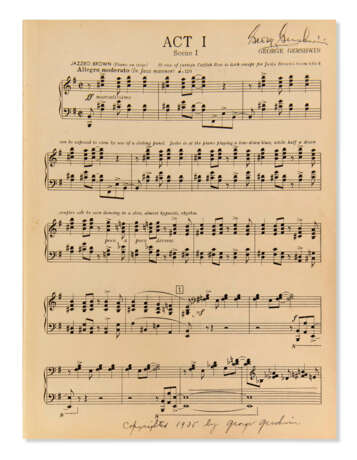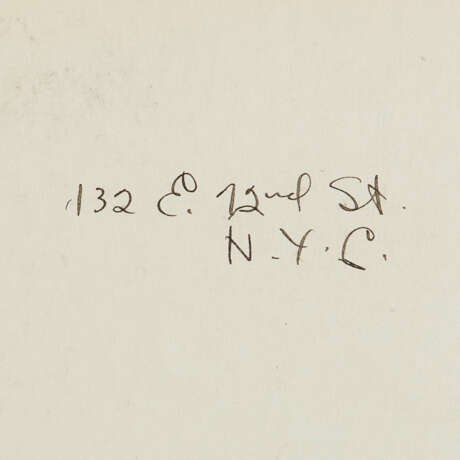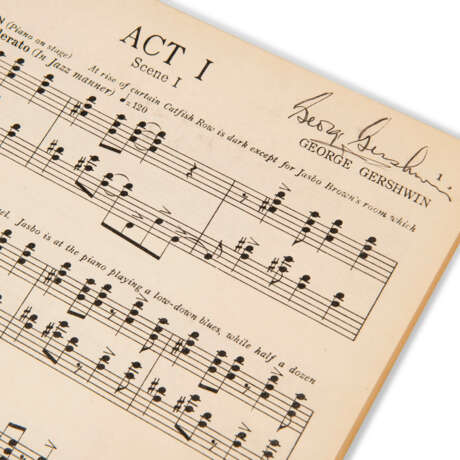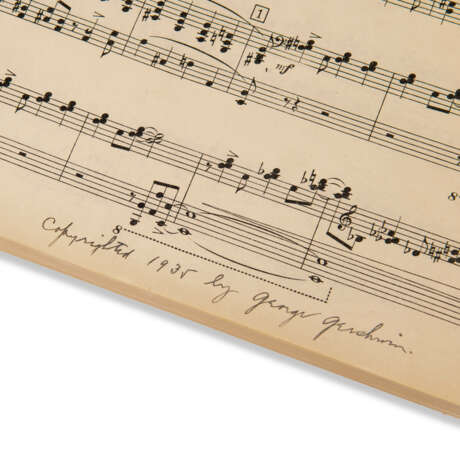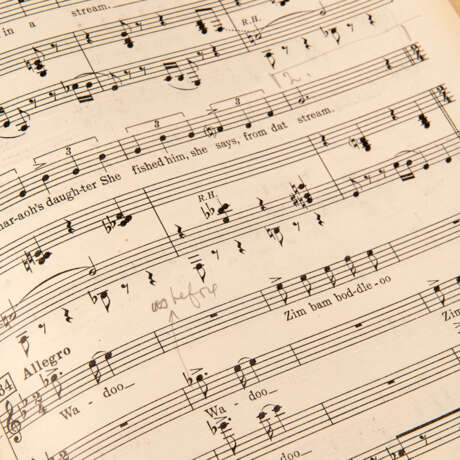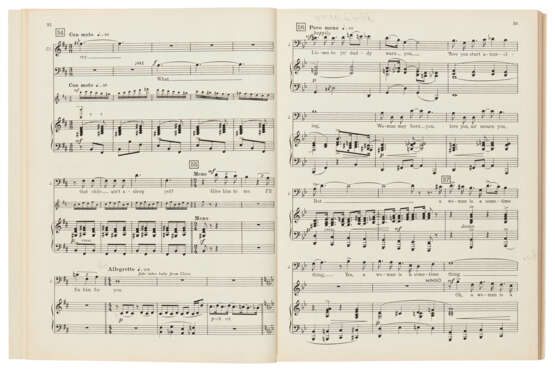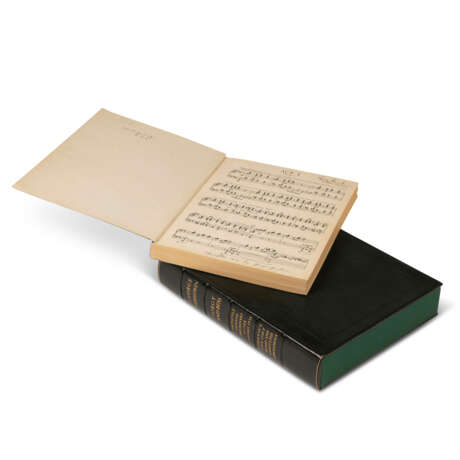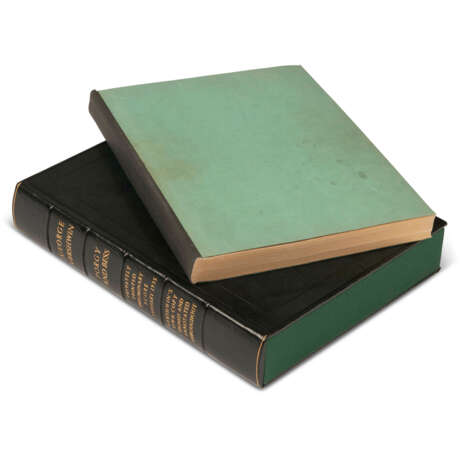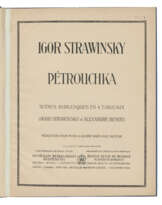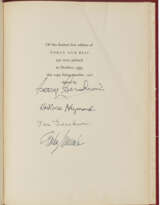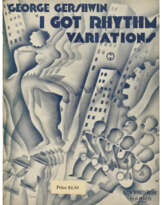ID 1016508
Lot 147 | Porgy and Bess
Estimate value
£ 12 000 – 18 000
George Gershwin
GERSHWIN, George (1898-1937). [Porgy and Bess.] [Gershwin Publishing Corporation, January 1935.]
A privately printed preliminary score of Acts I and II of Porgy and Bess intended as a working score for the principal players and production team of the 1935 Theatre Guild production of the opera, Gershwin’s own copy, signed by Gershwin on the first page, with pencil annotations by him throughout.
Widely regarded as his masterpiece, Gershwin based his first and only opera on Dubose Heyward’s novel Porgy, with the author as librettist, and lyrics by both Heyward and Ira Gershwin. ‘In Heyward as collaborator’, wrote Schwartz, ‘Gershwin found almost the perfect partner for realizing in musical-theatrical terms this story about the crippled beggar Porgy and the poor blacks of Charleston.’ With an all-black cast at the insistence of the Gershwins, the first production was staged by the Theatre Guild, opening at the Colonial Theatre in Boston on 30 September 1935, before moving to Broadway for its New York run in mid-October. Although tremendously popular from its first production, becoming one of the best known and oft-performed American operas, its depiction of African Americans by an all-white team attracted controversy from the outset.
Gershwin began the composition in early 1934, working from both New York and Folly Beach in Heyward’s native South Carolina, where he drew inspiration from the local Gullah community. Completion was in sight when Gershwin wrote to Heyward in November 1934, suggesting that performers be auditioned starting ‘January or February so that those people we choose for the parts can be learning the music.’ In a letter dated 24 January 1935 to Todd Duncan, who would play the lead role of Porgy, Gershwin wrote ‘“I am leaving for Florida this weekend where I begin the task of orchestrating the opera… Before I leave I am sending two acts of the opera to my publishers and a copy will be made available to you as soon as they are printed.” As promised, the vocal score for the first two acts of Porgy went to his publisher before he entrained for Palm Beach’ in late January. Porgy and Bess would be the first publication of the newly-formed Gershwin Publishing Corporation, a subsidiary of Chappell & Company – a preliminary piano-vocal score was to be printed for the use of the cast and production team in time for rehearsals in early 1935 and, once Gershwin forwarded his completed Act III to the publishers later that Spring, a first edition of the complete score would be published and available to the public by the time the opera opened in September. ‘Thus the published score’, writes musicologist Charles Hamm, ‘represents Porgy and Bess as Gershwin wrote it down months before it went into rehearsal and then performance.’
Printed approximately eight months before the published score, this extraordinary preliminary copy of the piano-vocal score for Acts I and II is one of the small number of pre-publication copies printed for use by the cast and production team as a working score during rehearsals for the Theatre Guild production. As printed, the score has no title page, lists no publisher, and has a plain green paper wrapper, its only identifying mark being Gershwin’s name printed at the top of the first page. Gershwin has marked the score as his own working copy by signing in black ink above his printed name and written his address ‘132 E. 72 St. N.Y.C.’ on the inner front wrapper. At the foot of the first page is written ‘Copyrighted 1935 by George Gershwin’, which was presumably added in late September when the copyright was filed. Throughout the 442 pages of the manuscript are almost one hundred rapid markings, notations, corrections, additions and revisions to the score and stage directions, many of which are in Gershwin’s hand, some of which are evidently in other hands, while other markings are so brief that their authorship is unidentifiable. Todd Duncan recalled that Gershwin was present at rehearsal ‘almost every day’ and evidently worked closely with director Rouben Mamoulian, musical director Alexander Smallens and vocal coach Alexander Steinert, to make cuts and revisions to the music up to the time of the New York opening. The production, states Hamm, ‘involved a large number of cuts and other changes made with the involvement and approval of Gershwin, for several reasons: to conform to the nature of the Theatre Guild production, which took on a character of its own under Rouben Mamoulian; to remedy weaknesses or redundancies uncovered during rehearsals and a trial stage performance; [and] to tailor the piece to the talents and limitations of its cast.’ These changes were never copied into a master score, nor updated in future editions of the published score.
During archival research for his 1987 article on the original Theatre Guild production of Porgy and Bess, published in the Journal of the American Musicological Society, Hamm analysed the original handwritten annotations and alterations made during the 1935 rehearsals, as found in the conductor’s score, the vocal scores of the original cast, the prompter’s book, and the original orchestral parts. Hamm identified two other pre-publication piano-vocal scores in institutional collections: one in Harvard University's Eda Kuhn Loeb Music Library, stamped on the first page ‘This copy is for professional use only. It is not for sale or distribution’, used by Alexander Steinert as vocal coach and rehearsal pianist for the 1935 production, and later bound for preservation, thus apparently lacking the original paper wrapper; the other in the Library of Congress comprises two volumes – Acts I & II are printed and bound together with a paper wrapper, in the same manner as the present score, and Act III is bound separately in a similar fashion – with the pencil annotations of the production’s musical director and conductor Alexander Smallens. Including the present score, all three examples lack the instrumental introduction and, as Hamm identified, ‘the pagination differs by three from that of the final published score, since the introduction, composed later, added three pages.’ When considered together with the other extant pre-publication working scores, the edits represent the completion of Gershwin’s compositional process – the final version of the opera as he wanted it to be performed. Subsequent productions worked from the published score, not the amended score as edited by Gershwin and his collaborators for the premiere production of Porgy and Bess. Based on Hamm’s research, a reconstruction of the first production, as revised, approved and supervised by Gershwin, was performed on 24-25 February 2006 by the Nashville Symphony, under the direction of John Mauceri, and recorded by Decca. Duncan, cited in Armitage, 1938. Hamm, published in JAMS, Autumn, 1987, 495-532. Schwartz, 243-262.
Quarto (293 x 229 mm). Original green paper wrapper respined (light soiling to panels). Housed in a modern custom green morocco solander box.
| Address of auction |
CHRISTIE'S 8 King Street, St. James's SW1Y 6QT London United Kingdom | |
|---|---|---|
| Preview |
| |
| Phone | +44 (0)20 7839 9060 | |
| Buyer Premium | see on Website | |
| Conditions of purchase | Conditions of purchase |
